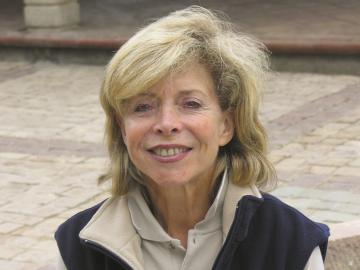Maria Luz Marin
POSTED ON 01/09/2008Having read that she was a pioneering winemaker in Chile, I was still unprepared for the bundle of energy, enthusiasm and determination that greeted me when I arrived at Casa Marin in Chile’s San Antonio Valley. Maria Luz Marin gravitated back to San Antonio having first spent time there with her father as a child. Not that she had any inkling at the time that a chilly hillside plot four kilometres from the Pacific Ocean with its cooling ocean breezes would be the basis for the foundation of a winery in the millennium year. It was only many years later, after researching sites in New Zealand, South Africa and California, that it struck this restless soul that the climatic extremes and exposures offered by the hilly slopes of San Antonio were just the ticket for realising a dream: to have a vineyard of her own and make top-class wine.
 Maria Luz Marin
Maria Luz Marin
In the years before settling on San Antonio, Maria Luz worked making bulk wine and supplying supermarkets around the world, including the UK. She was renting space in wineries, buying wine from different producers and creating blends according to the specifications of her customers. ‘Working hard, keeping my clients happy, it was easy enough to make money but it was only ever a stepping stone to here’, she says, with a sweep of her arms around the discreet hacienda-style winery with its courtyard and terracotta roof, enlivened by her sister’s art and sculpture. She is keen to bring to the winery a cultural link with the Litoral de las Poetas, where Pablo Neruda lived, and since the winery is in the small village of Lo Abarca, to involve as many of the 600 villagers as she can from this notoriously impoverished area.
‘Chile’s central valley with its warm climate and rich soils effortlessly produces ripe grapes and high yields and growers are happy enough making good value wine with typical varietal character’, says Maria Luz. While she enjoyed the travelling that went with the job, the winemaking itself and the easy money it provided, it wasn’t enough. Her ambition was to make ‘something unique, different and unknown’, so she plumped for the extreme conditions of La Abarca in San Antonio. So extreme in fact that as an area classified as forest by the government, nobody she tried to interest in making wine and investing in the project was prepared to go that far out on a limb. And she admits: ‘At Casa Marin, we are on the very edge of viticultural possibilities’. Despite many attempts times to attract investors, she couldn’t get anyone to bite, so she scrimped and saved before taking the gamble of sinking all her own money into the construction of the winery and the planting of 38 hectares of vines.
Despite the doubts of others, Maria Luz was convinced she could succeed. ‘There are very few vineyards in South America where you have at the same time the true blessing and difficulty of a vineyard struggling to ripen’, she says. She’s already made a name for herself with sauvignon blanc, growing two very different styles, the tropical Laurel and the cooler, more nettley, minerally Cipreses, grown at the top of a hill and picked earlier. She makes good aromatic sauvignon gris and gewürztraminer, a riesling which is as yet less successful, and no chardonnay because ‘I don’t like it very much’. There’s clearly great potential for both pinot noir and syrah, with her Lo Abarca Hills pinot and Syrah Miramar Norte both showing the intensity of the cool climate style, so much so that she’s able to state with confidence that Lo Abarca ‘has true and distinct terroir’. Maria Luz’s success to date is gratifying because that sort of courage and determination is unusual in an industry dominated by large companies and bean counters. She’s a true pioneer and an inspiring rôle model for a country that could do with a few risk takers.

